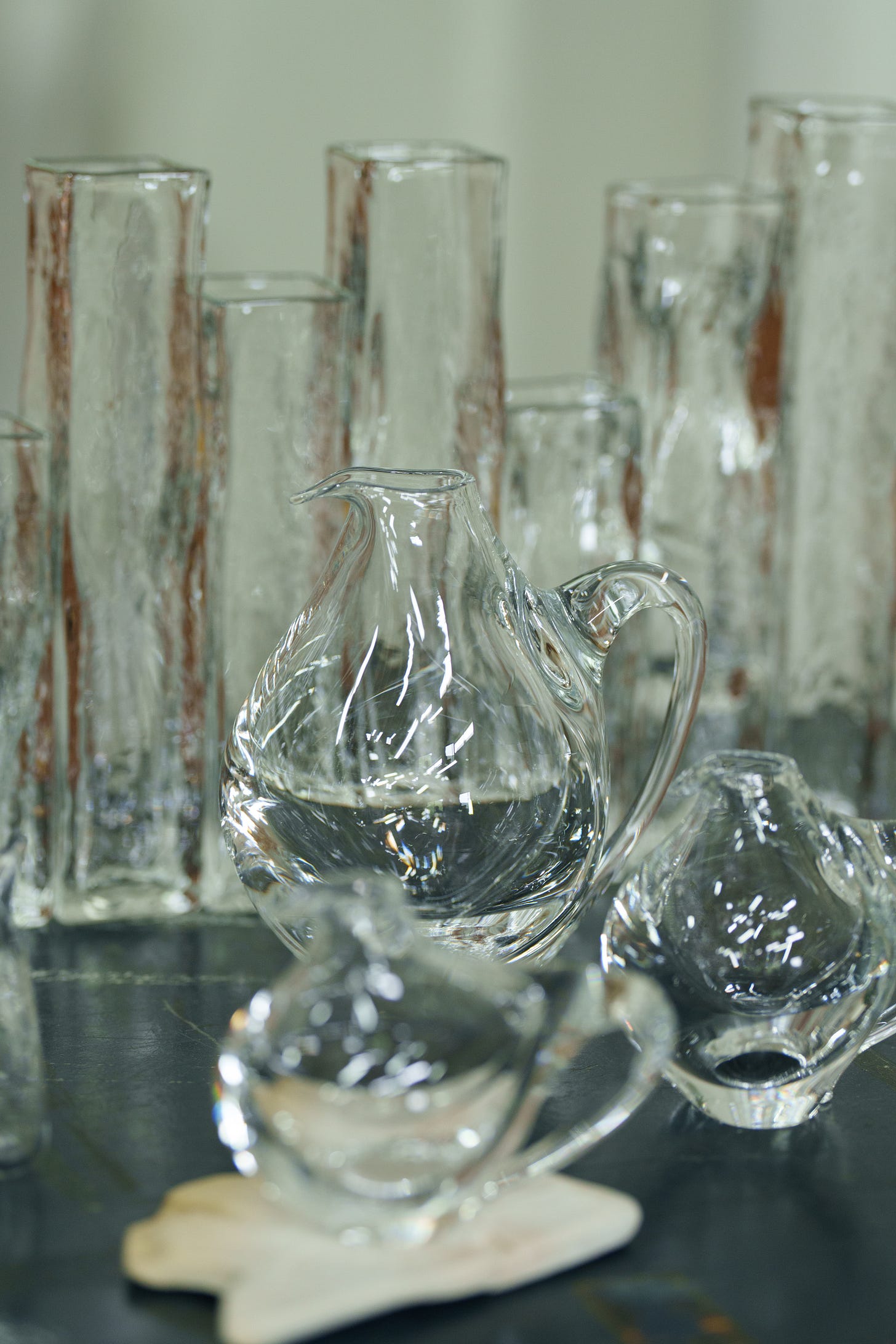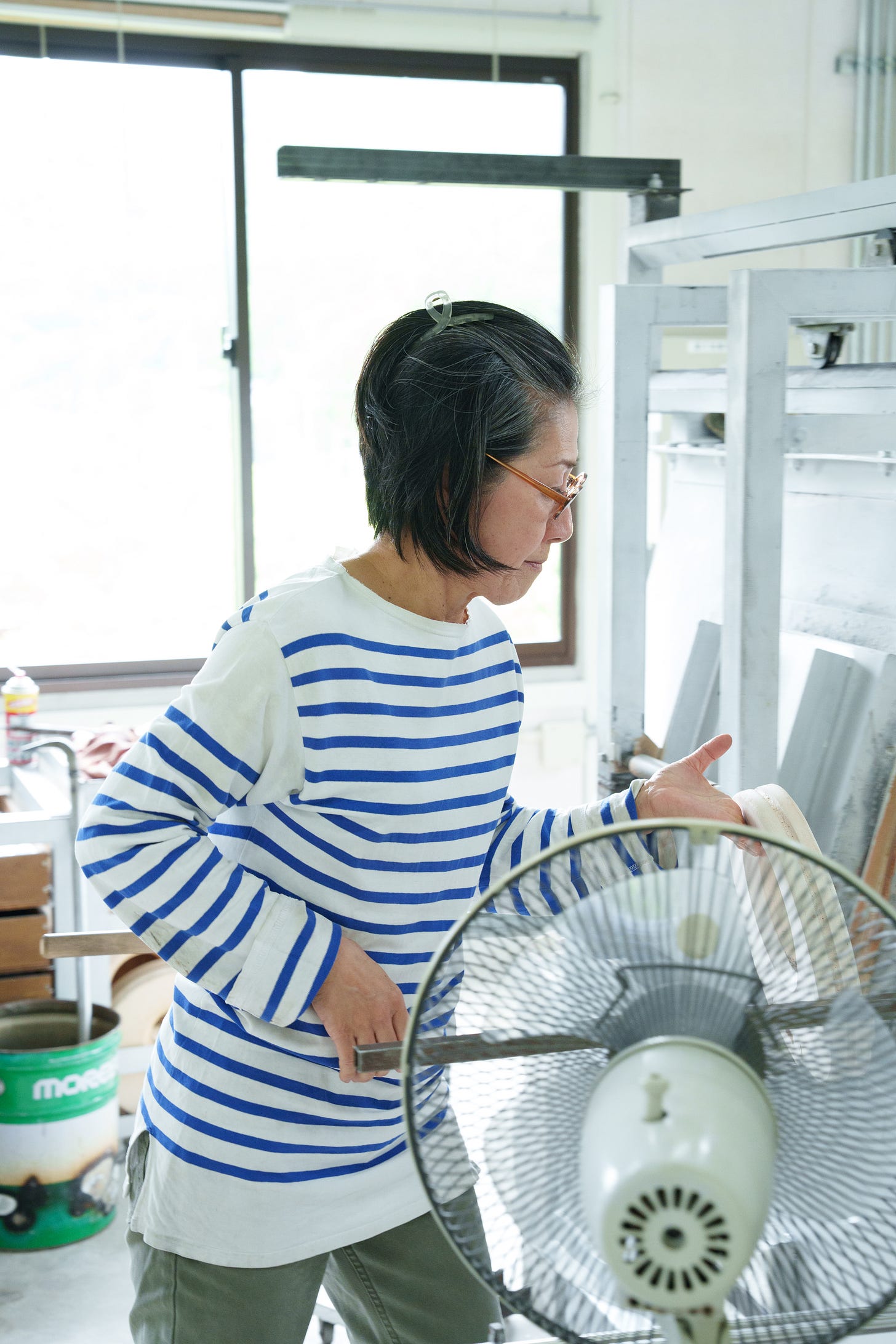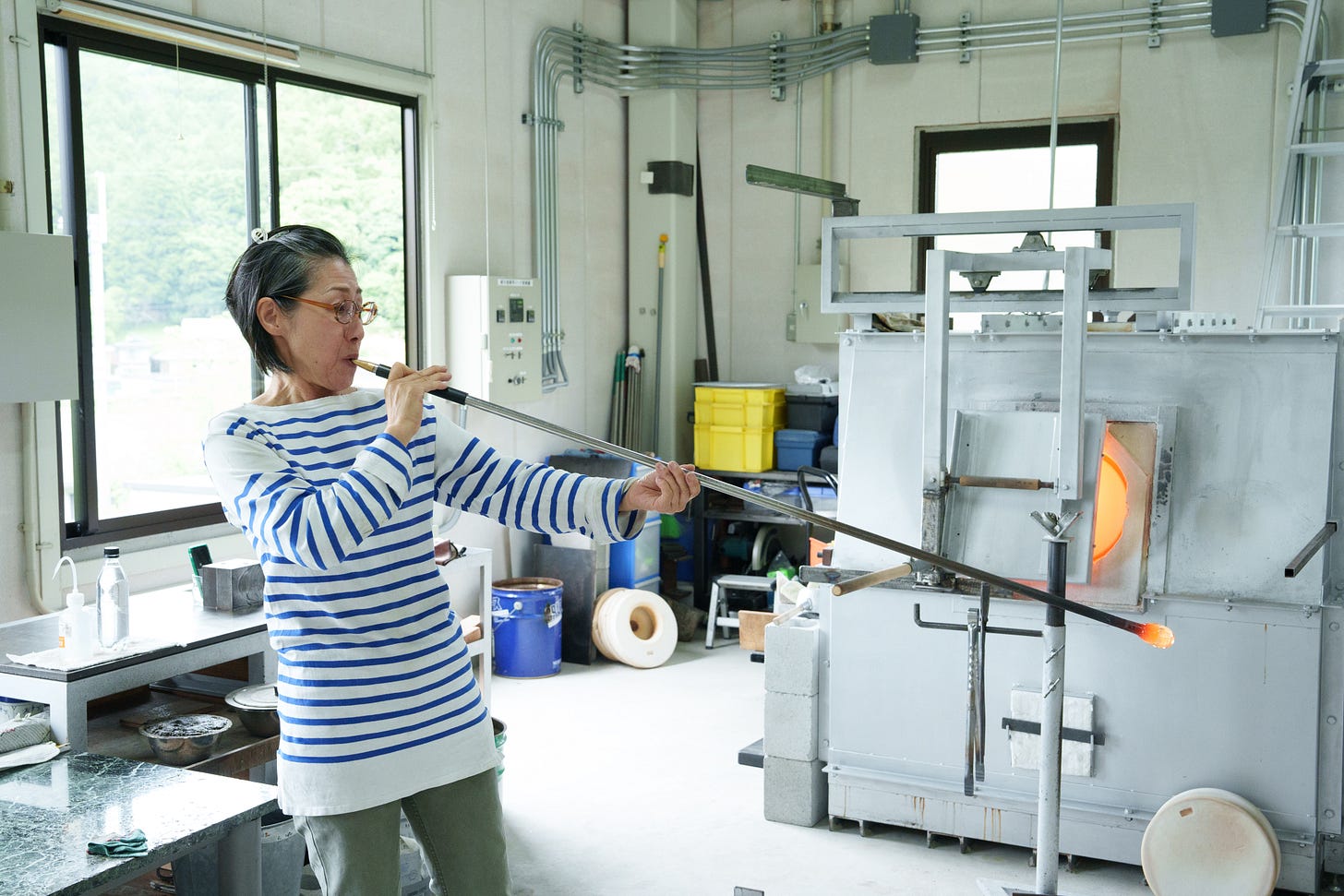Twisting Traditions: Keiko Lee
The Rock Glass
One of the most remarkable achievements of contemporary Japanese kogei, and one which sets it apart from historical practices of the craft, is the notion of twisting traditions and established practices. It is what has enabled Japanese kogei to transition from a tradition where crafts were exclusively used for everyday utensils to the use of craft mediums to create original contemporary art. While traditions have been central to the craft, practiced generation after generation with little change—tea bowls in clay, boxes in lacquer, an obi (belt for a kimono) in weaving, and baskets in bamboo—Japan’s craftspeople have learned from their ancestors, apprenticed with master craftsmen, and passionately preserved their time-tested methods. In fact, they are expected to continue the inherited traditions.
It is the recent generation of craftspeople that has revolutionized that continuity and shaken this stability. They have begun searching for their personal voice, pushing boundaries and introducing new ideas. While remaining true to the methods of the craft—paying great respect to their heritage—they have introduced daring and fearless new means of expression, thereby becoming participants in the global movement of contemporary art. The craftspeople featured in this section about my journey in Japan have completely transformed traditions, introducing a new spirit and taking the world of Japanese crafts to new horizons.
Keiko Lee
To glass artist Keiko Lee, blowing glass is a form of performing art. As she creates her vessels, gathering the molten glass, moving the blowpipe from her mouth to the corner of the furniture and other surfaces at her expansive studio—the surface of the table, the white wall—surfaces which she uses to form her distinctive shapes, she is moving, dancing around, combining art with performance. She uses the performance to emphasize the role of her body in the artistic process, and her pieces are as expressive as the canvases by those early performance artists of the American Abstract Expressionism Movement. I was fortunate to be her live audience-of-one when visiting her home studio in the town of Toyono, at the northern tip of Osaka Prefecture. There, surrounded by mountains and lush, open countryside, she crafts her magnificent glass jewels, which resemble crystal rocks. This is fortunate, I say, as the action is hardly visible in the finished art object.
Keiko Lee belongs to a new generation of Japanese glass artists, working in a variety of methods. However, unlike ceramics, lacquer, textiles, wood, paper, and bamboo, art glass is relatively new to Japan. Without long traditions to refer to, glass artists draw on the aesthetic values of Japan, utilizing the vocabulary to emphasize the viewer's experience and connection to ideas of Japanese heritage. She graduated from the Kyoto International Art College and started her career at an established glass studio iin Aichi before founding her own studio in 2003.
Keiko Lee, one of the most stimulating talents working in Japan today, is referencing the landscape of her surroundings, and her glass objects embody the iconic wabi and sabi approach, which is defined as finding the beauty in things which are imperfect and impermanent, while expressing the decay and transience of all things in nature, which ultimately express the wisdom of natural simplicity. Lee references the natural surroundings of her home in her glass, and her objects are inserted with the elegance and refinement associated with another Japanese concept, the Miyabi. She achieved a minimalist, simple, and delicate aesthetic through the unified use of clear glass—no color, no ornaments, no adornment—just sculptural glass that embodies Japanese ideals. It is the core of her innovation.
Her Rock Glass pieces, which she calls ‘stones’, are inspired by rocks collected in nature. They are her source of inspiration, and they capture nature in the most personal way. Do not think of crystal rocks or pebble stones. Her objects have irregular and organic shapes that emphasize the way rocks are found in Japanese nature and her own hand. Her connection to nature was cemented when she spent time in Izu Islands, famous for its volcanic islands. Lee is hard working, paying attention to each piece she creates, and her pieces are somewhat predictable. Her method stands between the air-blown and mold-formed glass, and they are unique to her. I hope she will take this established vocabulary to move to the next stage with larger, more ambitious works.
Photography by © Takuro Kawamoto.
This visit made possible by RW Guild.






















